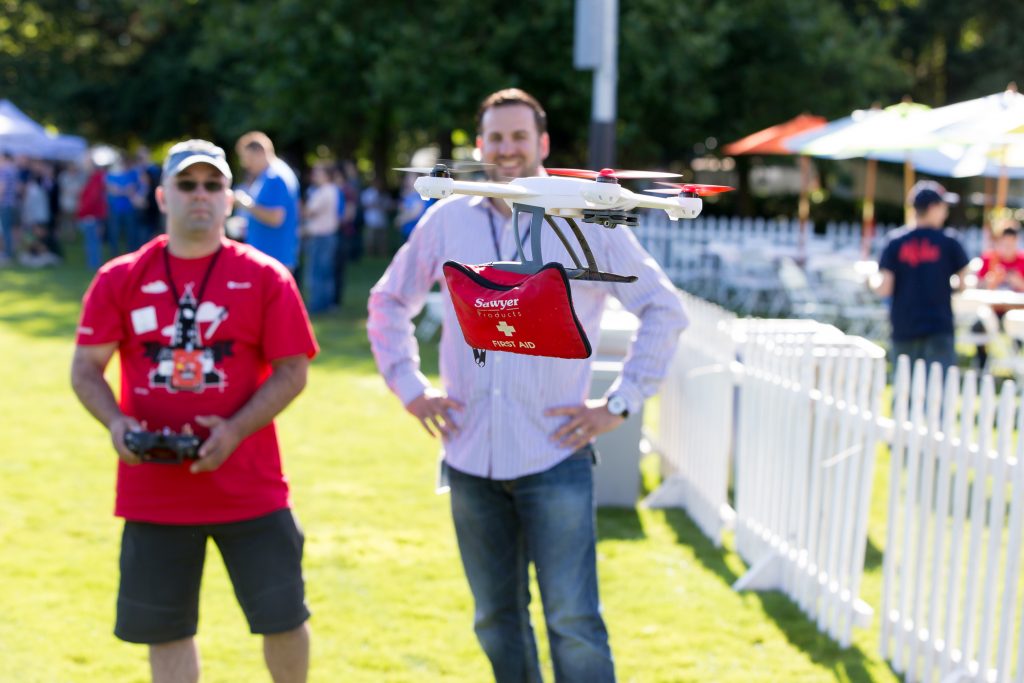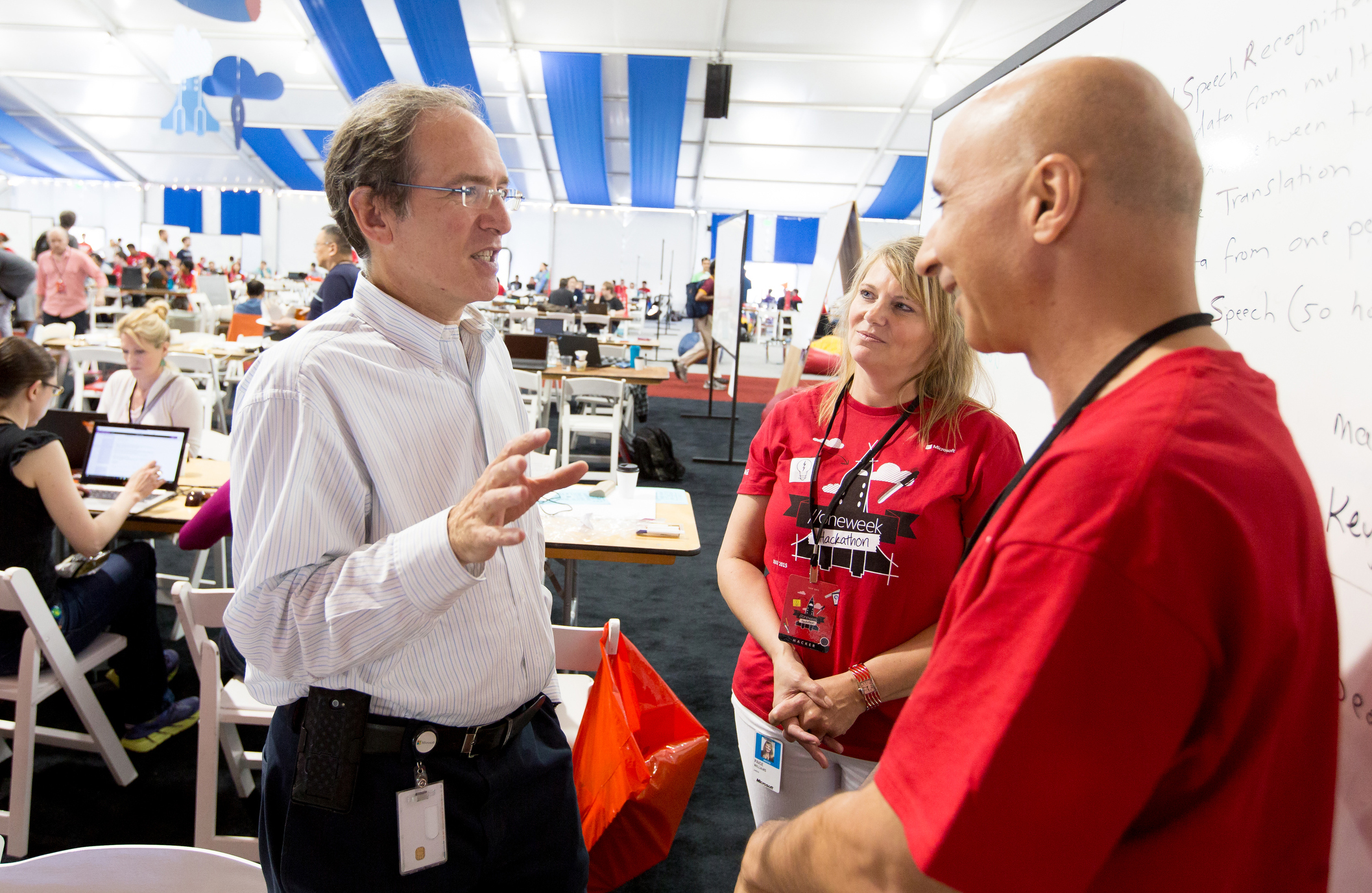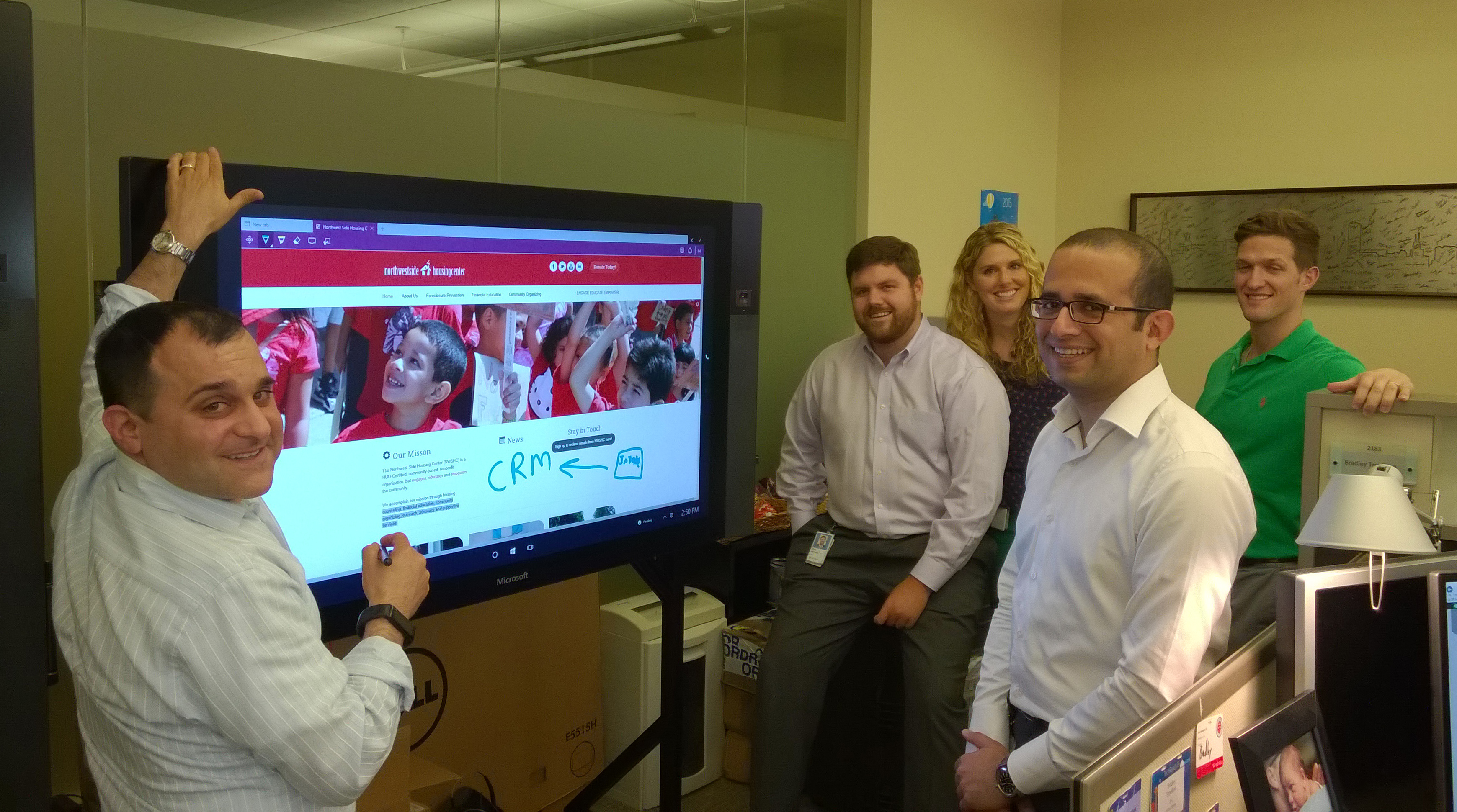
//oneweek Tech For Good Hackathon projects bring a world of good to nonprofits
Sure, Paige Williams and Will Lewis have worked together at Microsoft over the years. But it wasn’t until this week, at //oneweek, that they finally met. In person. Now, they practically finish each other’s sentences as members of the Hackathon team that is using Microsoft’s leading-edge machine translation technology and the linguistic diversity of the employee workforce to help nonprofit organization Translators Without Borders.
Williams’ and Lewis’ group was one of 165 Tech for Good Hackathon projects going on at Microsoft campuses around the world; topics included accessibility, environment, human rights and nonprofits. Nearly 500 people participated in the Tech for Good hacks.
The hacks are in the same spirit as the Tech Talent for Good program, started earlier this year at Microsoft. The program encourages employees to use their technical expertise to help nonprofit organizations – often strapped when it comes to technology training and knowledge – achieve more.
“I’m an enthusiastic person, but this is truly exciting – to see folks come together from across the company and work on something that they’re passionate about, that makes a difference, a real difference, in people’s lives,” says Williams, director of global readiness for Microsoft.
Lewis, principal technical program manager with MSR Machine Translation, agrees.
The Hackathon and //oneweek really “feels like One Microsoft to me – there doesn’t seem to be any walls,” he says. He spent the week “thinking about what skills people were bringing to the table,” and “not about the fact that people were on another team” in the company. “That didn’t matter,” he says.
It didn’t. All that mattered was helping organizations that help others.
“It is amazing to witness the generosity of our employees,” says Lori Forte Harnick, general manager, Citizenship and Public Affairs. “Their impact on nonprofits in local, national and global communities is unparalleled in the industry, and I continue to be impressed with the passion our employees bring to some very daunting societal challenges.”

Williams and Lewis brought language advocacy and technical expertise together to form a cross-disciplinary Hackathon team – one of the largest, with more than 40 members – to help Translators Without Borders. Every year, the organization assists in disaster and crisis relief by translating more than 2 million words for nonprofits such as Doctors Without Borders, Action Against Hunger and Handicap International.
But that word count “is not even meeting 1 percent of the need,” Translators Without Borders says on its website. “There are literally thousands more organizations that need help for critical communications.”
That’s where the //oneweek efforts can help. “Microsoft speaks every language that our customers do; we’re obviously a very diverse company,” says Williams. “The idea to begin hacking around was, ‘What if we leveraged the diversity of Microsoft employees’ native language expertise, gathered a community of those folks together, created a framework to record their linguistic data, then deployed that in a real-world scenario for first responders through Translators Without Borders?’”
The goal is to provide help in a crisis, in any language, anywhere in the world. “One of the things we are looking at is if you want to do automated translation on a device now, for example, you usually have to have a data connection to make it work,” Lewis says. “What we’re looking at is how we could have the entire infrastructure running so that you could basically do a translation in the field, on your device without a data connection.”
Kyle Schadt and Shane Petersen are normally at the helm of Microsoft IT, as senior IT program managers helping their fellow employees. But this week, both of them spread their wings and used their project management skills as members of the Drone Airspace Management project.
The eight-member team is developing an airspace management tool that can be rapidly deployed in disaster areas by Uplift Aeronautics. The nonprofit uses drones to deliver food and supplies to those in desperate need, such as at refugee camps in strife-torn Syria. Another organization that will benefit is the Humanitarian UAV Network, which would likely be managing drones in the air alongside or, on behalf of, aid organizations like the UN or World Bank.
Drones can be wonderful tools for helping. But they can also get in the way of bigger aircraft assisting at disaster scenes, something that happened this month in California as firefighters battled blazes, and last April in Nepal following the major earthquake there.
In Nepal, “there were 15 different drone operators that showed up on scene, wanting to help, working directly with the UN and with the World Bank, trying to figure out what to do to help, what airspace they were going to be flying in, and there was no easy way for them to coordinate the 15 different drone operators in the area,” says Schadt.
Coordination involved using a simple whiteboard – not an ideal solution for something so complex.
To help with this challenge, the Hackathon project involves creating a backend SQL database and a user interface that allows pilots to enter new destination and supply information, and to manage airspace requests so that “no two drones will be in the same area at the same time,” Schadt says, and will “feed the data to other organizations that might have manned aircraft in the area.”
It also involves an intellectual challenge for Schadt and Petersen, who both relished that aspect of //oneweek, as well as the cause itself.
“To me it’s about being able to make the world a better place,” Schadt says. “It’s fun to put my skills to the test, to do something new like this. It gets me working with others across the company who have a diverse set of skills that maybe I don’t see, day in and day out.”

Petersen says it has been important to him to “contribute to something that can save lives – maybe even our own lives someday,” referring to a recent article in The New Yorker about the impact of a major earthquake on the Pacific Northwest in the U.S.
Midway across the country, Adam J. Hecktman, director of technology & civic innovation for Chicago at Microsoft, is the organizer of the Dynamics CRM for Community Housing Hackathon team.
The idea for the project – to help the Northwest Side Housing Center build a CRM platform, with potential to help partner agencies nationwide – was sparked at a panel discussion at the University of Chicago about civic technology.
Hecktman was in attendance, and so was the Northwest Side Housing Center’s executive director, who raised his hand and said, “What do you mean, civic technology?” His organization, the director said, like others, had problems just managing their day-to-day operations on spreadsheets.
Hecktman invited him to Microsoft for a visit to see if he could help. The result is the Hackathon team with more than 20 members that is building a prototype for a CRM system to make it easier for community housing agencies to create the reports needed for the various government and private agencies that fund them.
“I am extremely passionate about two things: Microsoft technology and my city,” Hecktman says. “And anything I can do to bring the two together is just fantastic for me, brings me joy to no end.”
“Through programs like Tech Talent for Good, Microsoft’s most valuable resource – our employees – can help address some of the world’s most pressing needs,” says Forte Harnick. “Participating in the Hackathon helps employees reignite their passion, while gaining valuable experience working together across teams. Their work directly helps nonprofits and the people they serve. Making a difference in the world is something our employees take great pride in and they prove every day that, together, we can accomplish great things.”
Lead image: Erik Namtvedt, left, and Kyle Schadt of the Drone Airspace Management project. The project’s aim is to create tools to manage airspace requests by nonprofit groups in disaster areas so that “no two drones will be in the same area at the same time,” Schadt says. (Photography by Scott Eklund/Red Box Pictures)















